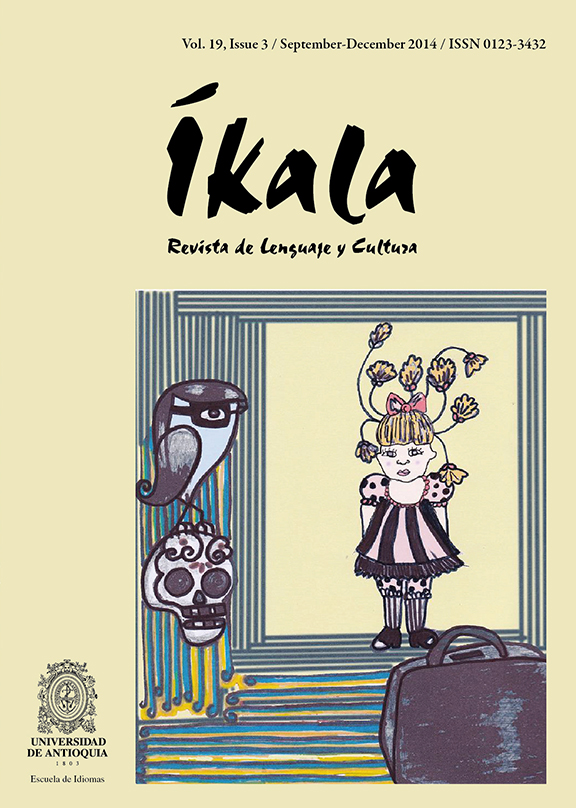The Ovidian Fable of Philomela Reviewed by the Middle Ages: from Chrétien de Troyes to Alfonso X
DOI:
https://doi.org/10.17533/udea.ikala.v19n3a02Keywords:
Philomela, Ovid, Chrétien de Troyes, Alfonso X, medieval translationAbstract
Downloads
References
Almeida, B. & Sánchez Prieto-Borja, P. (Eds.). (2009). Alfonso X El Sabio. General Estoria. Segunda parte. Madrid: Biblioteca Castro & Fundación José Antonio de Castro, 2 vols.
Álvarez, C. & Iglesias, R. Ma. (Eds.). (2001). Ovidio. Metamorfosis. Madrid: Cátedra.
Botero García, M. (2010). Las traducciones de Ovidio en la Edad Media. Hermeneus. Revista de la Facultad de Traducción e Interpretación de Soria, TI, (12), 31-54.
Botero García, M. (2012). La naissance de l'amour dans les récits ovidiens français du xiie siècle. Troianalexandrina: Anuario Sobre Literatura Medieval De Materia Clásica, 12, 139-162.
Chrétien de Troyes. (2000). Philomena. En E. Baumgartner (Ed.), Pyrame et Thisbé, Narcisse, Philomena. Trois contes du xiie siècle imités d'Ovide. Paris: Gallimard.
Duby, G. (2000). Dames du xiie siècle. 1. Héloïse, Alienor, Iseut e quelques autres. Paris, Gallimard.
Gildenhard, I. & Zissos, A. (2007). Barbarian variations: Tereus, Procne and Philomela in Ovid (Met. 6.412-674) and Beyond. Dictynna, 4, [en línea]. Consultado el 30/7/2013. URL: http://dictynna.revues.org/150
Gómez Redondo, F. La corte letrada de Alfonso X (1256- 1284). Historia de la prosa medieval castellana, (pp. 423-852.) Madrid: Cátedra, 1998, t. I,
James-Raoul, D. (2007). Chrétien de Troyes, la griffe d'un style. Paris: Champion. Munk
Olsen, B. (1995). La réception de la littérature classique au Moyen Âge (IXe-XIIe siècle). Copenhague: Museum Tusculanum Press.
Orduna, G. La ''estoria'' de Acteón : Ovidio y la General Estoria alfonsí. Letras, 11-12, 134-139.
Perona, J. (1989). Lenguas, traducción y definición en el Scriptorium de Alfonso X. Cahiers de linguistique hispanique médiévale, 14-15, 247-276
Petit, A. (2010). Le premier portrait féminin dans le roman du Moyen Âge. Les filles d'Adraste dans le Roman de Thèbes. En Aux origines du roman. ''Le Roman de Thèbes'' (pp. 171-182). Paris: Champion
Possamaï-Perez, M. (2006). L'Ovide moralisé. Essai d'interprétation. Paris: Champion.
Salvo García, I. (2010). La materia ovidiana en la General Estoria de Alfonso X: problemas metodológicos en el estudio de su recepción. En F. Bautista Pérez y J. Gamba Corradine (Eds.). Estudios sobre la Edad Media, el Renacimiento y la Temprana Modernidad, (pp. 359-369). San Millán de la Cogolla: Cilengua & Semir
Zumthor, P. (2000). Essai de poétique médiévale. Paris: Éditions du Seuil
Additional Files
Published
How to Cite
Issue
Section
License
Copyright (c) 2014 Íkala

This work is licensed under a Creative Commons Attribution-NonCommercial-ShareAlike 4.0 International License.












